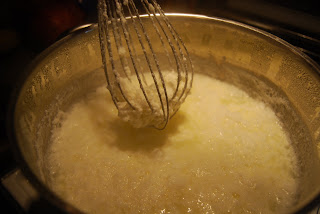We attended a one-hour workshop, followed by a seed exchange, on Seedy Saturday (yesterday). Sadly, though sponsored by
College of the Rockies, the workshop was held in a church basement at the same time as a garage sale was going on in the other part of it. There were pillars (big enough to hide behind) marching down the center and no microphones, so all together it was extremely difficult to hear the speakers.
I'm not convinced that I'm going to get into saving my own seeds, anyway. (Would I have been if I could have heard everything? Who knows!) I'll definitely make a larger effort to buy open-pollinated seed, though, in the event I change my mind and also to help create demand for heritage varieties. Last summer
Hanna and I planted several heritage seeds we'd found from
Salt Spring Seeds we'd purchased on an adventureseome day on Salt Spring Island last May with Jen (who needs a blog to link to again...)
Strangely, there was a way better selection of Salt Spring Seeds at yesterday's workshop than the girls and I found on the island last year. We purchased several kinds to try in this year's garden.
For me, the highlight of Seedy Saturday was chatting up folks, including neighbors, Dan and Val, whose blog we'd already discovered,
Grunt and Grungy's Garden. Dan was one of the speakers, as his area of expertise is saving tomato seeds. They currently have a seed bank of over 700 varieties of heirloom tomatoes, and they'll mail them to you wherever you happen to live. Check it out if you're interested! I picked up a few. Does that mean I'm starting transplants? Eep!
Because I'd been unable to see or hear Dan's presentation, he gave me a quick run-down afterwards at his table.

Here's a close-up of tomato mush in various stages of seed harvest. It's a messy business:

The fellow from Garden Hoe Farm was there, obviously ready to have his picture taken, though I didn't catch his name:

He had a variety of seeds available for donations to the cancer society:
 Creston Valley Food Action Coalition
Creston Valley Food Action Coalition had a booth there as well:

Last year was their pilot year in providing local grains through Community Supported Agriculture. Area residents purchase grain shares in spring and receive bags of grain in the fall:

This is something we're interested in looking into as a direction for some of our own land: seeing what we might be able to produce that is in demand by this local organization.
All in all it was a good time of meeting neighbors and Talking the Talk.




























